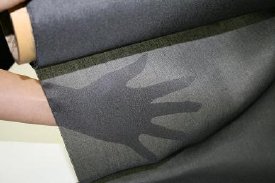Sep 15 2010
Toho Tenax Co. Ltd., the core company of the Teijin Group's carbon fibers business, announced today that it has developed a gas diffusion layer (GDL) made of a carbon fiber fabric for use as an electrode component for fuel cells. The new GDL will be marketed from late September.
The new fabric-type GDL exhibits better flexibility and strength than commonly used paper-type GDLs, which are carbon fiber sheets impregnated with resin or other materials. With the new fabric structure, roll-to-roll processing can be performed at high speeds, enabling a reduction in user costs. Also, since resin or such is not needed, water permeability can be further improved, enabling higher output of fuel cells.

The new product also has lower contact resistance than conventional fabric-type GDLs, achieved by creating a uniform textile surface using various technologies refined by Toho Tenax, such as spinning, weaving, and carbonizing technologies. With low contact resistance, further improvements in fuel cell performance can be expected.
The new GDL will be available in two thicknesses: 260ìm and 320ìm. Based on market growth, Toho Tenax anticipates sales volume of 1 billion yen by 2015. Also, based on market needs for smaller fuel cells, the development of ultra thin fabrics with thicknesses of 200ìm and less is underway.
In recent years, demand has increased for mobile devices, stationary power supplies, and fuel cell vehicles, focusing attention on fuel cells that can be used as an energy source. Since GDL is a key part of the electrode in fuel cells, supplying hydrogen and oxygen fuel to them while collecting electrons generated and discharging water produced at the membrane, it must be able to conduct electricity and be water permeable. Carbon fiber sheets are generally used for GDLs as they satisfy these performance requirements.